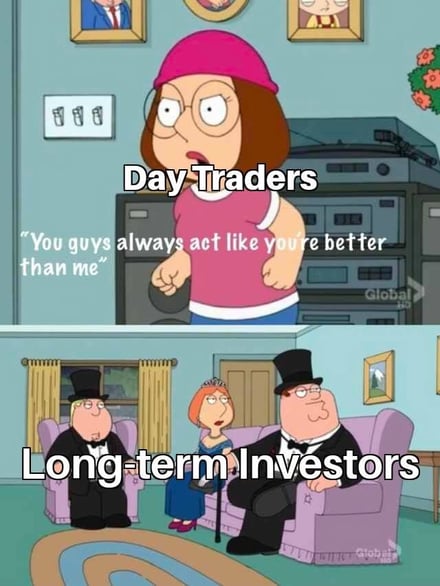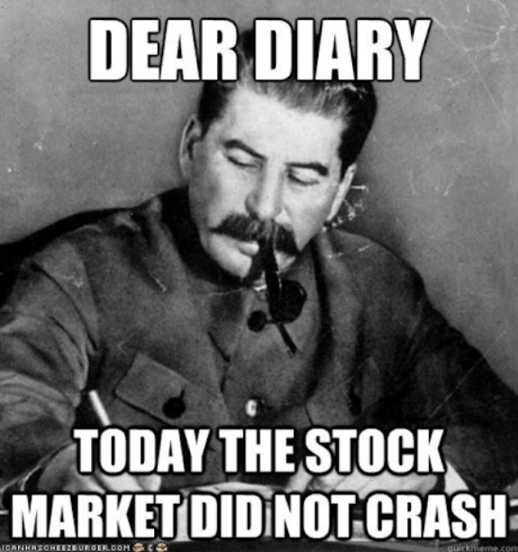Oh! To be the Wolf of Wall Street
Inspired by a true story, The Wolf of Wall Street centres on the rise and fall of young broker Jordan Belfort in the financial world of the 1990s. The first scenes of the movie show us the hero at the height of his glory, then follows an extended flashback revealing his meteoric rise and, finally, the end - his professional and personal collapse.
After starting his career as a junior broker on Wall Street and learning about the excessive practices that surround the profession, Jordan fell victim to the 1987 economic crisis and was forced to start all over again. He then mounts financial scams by selling low-end shares to large investors, which allows him to get rich quickly, lead an indecent lifestyle, and meet his new wife, Naomi, embodying material success through her beauty.
However, this ascending pattern is stopped short, first by difficulties in his married life, and then by the prosecution of the FBI, pointing at the illegality of his practices, particularly of selling his shares on the stock exchange. Jordan resolves to hide his income in a Swiss bank account, and after many adventures, he is sent to prison. The fall is radical; his wife divorces him, claims custody of the children, and he loses much of his fortune.
Despite all these disappointments, the end of the film shows us that he is invariably successful, giving motivational seminars around the world, teaching the art of sales.


The Wolf of Wall Street is also constructed as a tutorial that falsely suggests that the average viewer could leave the room and get rich after watching this film. The friends that the ambitious broker hires to form his first team of crooks have mostly failed their studies and corresponded to the American standards of "losers," their only skill being very often their sales experience.


The sequence where Belfort breaks the fourth wall, that is, he speaks directly to the public, facing the camera, to explain to them what an Initial Public Offering is, an initial public offering, is quite characteristic of himself. However, we can temper this statement by noting that the hero does not take the trouble to go to the end of his explanation by ironizing the audience's ability to follow his speech. Moreover, the end of the film shows us in front of an utterly dazed audience that seems to represent the spectators of the film themselves, supposedly incapable of fully understanding the workings of the financial system exploited by Jordan.
Phew. That’s not exactly the shortest summary, but we tried!
Investing in the stock markets is not a game. It is a fundamental discipline that has its own rules and practices. The intelligent investor acts within a well-defined framework and adheres to strict compliance with regulations in hopes of a good return on investment.
If you are a gamer at heart and losing money is not a problem, this article is not for you. If, on the contrary, investing is a serious matter for you, and you want to preserve and grow your capital, these 6 golden rules concern you directly.
1. Don't invest in just one company. Diversify!
This is THE GOLDEN RULE. Putting all your money in a single stock goes against any sound approach to investing. You must already be familiar with 'Don't put your eggs in one basket'. Diversifying is the best risk reduction strategy. A diversified portfolio will help you capture good potential returns while also spreading out risks from market volatility or business or industry cycles.
If we circle back to the The Wolf of Wall Street movie, the first intro of the excessive enrichment of Jordan Belfort is indeed a flashy, materialistic overconsumption, supposed to represent the usual lifestyle of most wealthy traders. Through various enumerations, we are presented, in an almost grotesque way, the various purchases of Jordan, such as his Long Island mansion or his luxury yacht, Naomi, a wedding gift to his new companion. The latter, met and married during her own ascent as an actress, is also almost part of the purchases made. She can be perceived as a representation of consumerist luxury through her irreproachable beauty – the actress playing Belford’s object of affection is also presumed to play the role of Barbie in an upcoming feature film. Belfort diversified his belongings and his wealth continued to compound from each of the quarters.
2. Plan for the long-term
Investing is no different from all other human endeavours: you need a plan and you need to stick to it to achieve your goals. With the rapidly changing prices in the market, you may be tempted to deviate from your plan at any time. However, rigour, discipline, and strength of character distinguish the intelligent investor from others. Deviating from your plan because fear and loss of confidence take over can only lead to bad results.
As Philosopher Seneca said: "There is no favourable wind for those who do not know in which port they want to arrive."
On-screen, madness is represented by cries, constant agitation, and tracking shots unleashed in open spaces. In addition, one can notice that in the first part of the film, the consumption of drugs is often at the origin of the strokes of professional genius of the main character: the garage is thus acquired after taking crack, and the meeting with Naomi is also set after the use of powerful drugs, which will be the origin of the idea - of the IPO. However, in the second part of the film, which corresponds to the downfall, drug use is this time synonymous not only with excess but with endangerment and painful experiences for Belfort, who must crawl to his car to get home urgently before managing to extract a piece of ham from the throat of his friend Donnie to save him from death by suffocation.


3. Be warned of behavioural biases
There is a tenacious tendency among investors to believe that when their position is winning, it is forever and that the profits are unlimited. It is a sin of convenience that can only lead to disillusionment. Nothing lasts forever, especially in financial markets.
When collective optimism is strong, it is time to add a dose of pessimism to your approach and lighten your positions.
Taking profits is part of the life of any savvy investor, and understanding when that time is, is crucial.
The beginning of Belfort’s cascade into debauchery can be seen very clearly during the iconic rhythmic chest-thumping scene at the restaurant. Jordan's mentor at Rothschild fills his ears with the ‘what and how’ he does to stay in good shape. Belfort need not have followed suit, but he did. The character sketch for Belfort is built as an overconfident and overzealous one for whom ‘more is just not enough.’ And before he knew it, his castle in the sky came tumbling down.
4. Don't try to time the market.
Some died waiting for the train to pass. Investing is not a goose game; it is a disciplined practice. The intelligent investor follows a well-defined and recurring investment process. They invest the same amount of money every month in their diversified basket of investments.
There is nothing sexy about the act of investing. It is and must be devoid of any emotional charge. It is a purely mechanical act that the investor must perform with coldness when he does not delegate it to the machine.


In this whirlwind of a movie based on a true story, group life and sociability are shown as vital in the broker's profession. Jordan Belfort organises big decadent parties, but he also wants the whole life of his employees to be lived under the sign of the collective - by his side. He explains that he wants to see his employees live his way. The climax of this group celebration is found in the ritual of beating the chest rhythmically. But in the end, we find the classic spring of bromance between Belfort and Donnie: their friendship is ultimately the only thing that will remain for the hero when he is on the point of losing everything.
5. Invest only in what you understand.
There are many investment vehicles today—shares, mutual funds, ETFs, dynamic funds, cryptocurrency, NFTs, start-ups etc. Only buy what you understand of the mechanisms and the underlying assets. And when you buy stock in a company, just because you heard about the company on TV doesn't mean it's a good deal. You must know its cash flow, current value, project pipeline, competitors, etc. This is not a trivial act; when you invest- you are not buying groceries (even if so, at least put as much effort as you do while checking out the quality of your sabzis).


His eloquence and ease in communicating with the client to obtain his trust, even extracting investments from him for worthless shares, allows Jordan Belfort to impose himself in finance. The whole point of his work lies in his daily telephonic discussions with buyers with increasingly significant capital, during which he must forge a personal bond with the client. By bombarding him with very precise figures and making him feel his privilege of speaking with a high-ranking company official, Belfort consistently achieves his ends, the film never showing us any failure of his sales attempts. His arrival in the small decrepit company of low-end brokers, then his first steps with his team of broken arms, is an opportunity for him to explain his sales techniques. And that’s how he fooled and defrauded.
6. Be realistic
"Don't expect an annualised return of more than 12% on your stock investment," says Warren Buffet, the most famous successful investor on the planet.
Investing does not make you rich overnight. Investing is a path to financial independence, not a slot machine.
Throughout the film, legendary director Scorsese plays with the spectator's feelings toward the hero, who appears selfish, profiteering, materialistic, and curiously sympathetic. His work is presented to us as ultimately producing nothing: Jordan's mentor tells him so from the film's first minutes. The illegal aspect of his practices further reinforces this image of a profiteer who plays on the credulity of wealthy investors and his knowledge of an obscure Mutual Funds system to the simple layman.
And finally
If there is one lesson to be learned from The Wolf of Wall Street, it is that markets remain in constant flux. No year will go perfectly. Without underestimating risks, we must nevertheless be aware that markets will fluctuate and correct themselves. Both ways.


Therefore, the best approach for the holder of a diversified portfolio, such as ones offered by mutual funds, is to focus on the long-term and realise that, in the short term, there is much ado about nothing, really.
And if you really have to, engage in some nice rhythmic chest beating. And humming, of course.
Disclaimer
This note is for information purposes only. In this material DSP Asset Managers Pvt Ltd (the AMC) has used information that is publicly available and is believed to be from reliable sources. While utmost care has been exercised, the author or the AMC does not warrant the completeness or accuracy of the information and disclaims all liabilities, losses and damages arising out of the use of this information. Readers, before acting on any information herein should make their own investigation & seek appropriate professional advice. Any sector(s)/ stock(s)/ issuer(s) mentioned do not constitute any recommendation and the AMC may or may not have any future position in these. All opinions/ figures/ charts/ graphs are as on date of publishing (or as at mentioned date) and are subject to change without notice. Any logos used may be trademarks™ or registered® trademarks of their respective holders, our usage does not imply any affiliation with or endorsement by them.
Past performance may or may not be sustained in the future and should not be used as a basis for comparison with other investments.
Mutual fund investments are subject to market risks, read all scheme related documents carefully.







Leave a comment